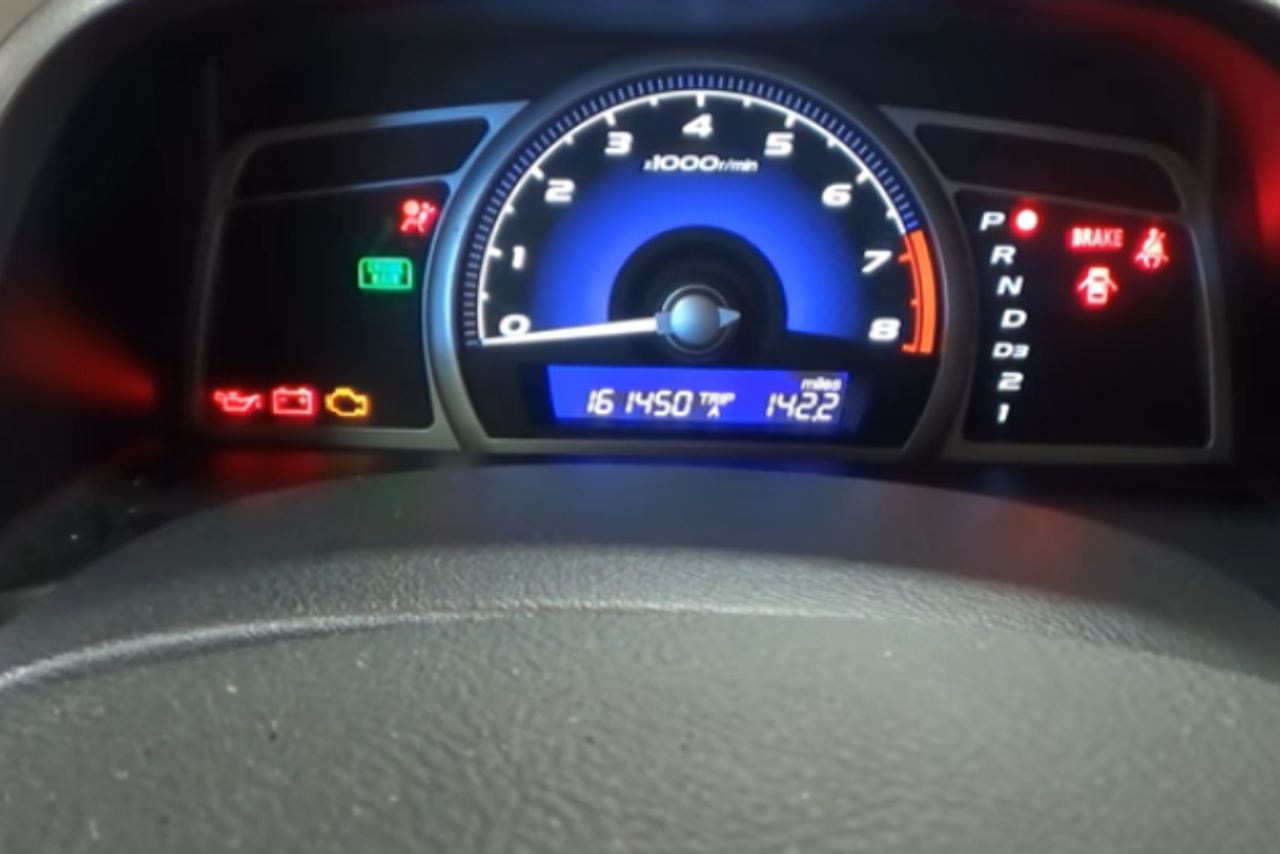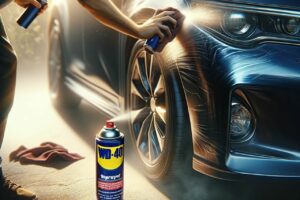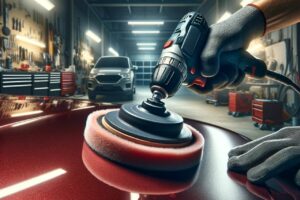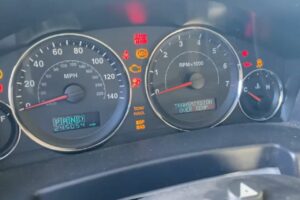Are you grappling with a Honda Civic emission system problem? These issues can be frustrating, but they’re not uncommon.
Emission systems are integral to your car’s overall health and performance; when something goes awry, it can lead to an array of complications—from decreased fuel efficiency to potential damage down the line.
In this article, we’ll delve into what these Honda Civic Emission System Problems might look like for Honda Civic owners, how they occur, and what steps you can take to resolve them.
The “Emissions System Problem” message in your Honda Civic means the car’s emission control system isn’t working properly. This could be due to various reasons, ranging from a simple issue like a loose gas cap to more serious problems like a faulty catalytic converter.
Your Honda Civic may encounter emission system problems due mainly to worn-out or damaged components such as oxygen sensors or catalytic converters.
Understanding these complexities will enable us in pinpointing the issue more accurately and seeking timely repairs.
Table of Contents
Common Honda Civic Emission System Problem:

Honda Civics are renowned for their longevity and reliability. However, like any vehicle, they can encounter problems with their emission system. Here’s a look at some common issues.
Below is a table summarizing these common issues along with symptoms and potential fixes:
| Problem | Symptoms | Potential Fixes |
|---|---|---|
| Oxygen Sensor Failure | Check engine light on, poor mileage | Replace sensor |
| Faulty Catalytic Converter | Reduced acceleration power, failing emission tests | Install new converter |
| EVAP System Leak | Smell of gasoline around car, check engine light on | Repair or replace damaged parts |
Remember that regular maintenance is key to preventing most emission-related problems!
Identifying the Signs of an Emission System Problem:

Emissions system problems in your Honda Civic can affect performance and fuel efficiency. Here are some signs to watch out for:
If you experience any of these symptoms, consider taking your vehicle to a professional mechanic. They have tools that can help diagnose emission-related problems like:
| Diagnostic Tool | Purpose |
|---|---|
| OBD-II Scanner | This device connects to your car’s computer and gives codes corresponding to different issues. |
| Smoke Machine | Mechanics use this tool to find leaks in the exhaust system by pumping smoke through it. |
Remember these steps when dealing with potential emissions system issues:
- Don’t ignore the check engine light.
- Keep track of changes in fuel efficiency.
- Regularly perform smog tests on older vehicles.
- Consult with professionals for diagnostics and repairs.
5
Understanding the Importance of a Well-Functioning Emission System:
Emission systems in your Honda Civic play an essential role. They control and reduce harmful pollutants released into the environment from your car’s exhaust gas.
| Function | |
|---|---|
| 1 | Protects the environment by reducing harmful emissions |
| 2 | Enhances overall vehicle performance through better fuel efficiency |
| 3 | Helps you comply with local and federal regulations |
So, maintaining a healthy emission system is not just about passing tests or avoiding fines; it’s also about ensuring optimal performance from your Honda Civic while doing our part for Mother Nature!
Potential Causes of Emission System Issues in Honda Civics:
Several factors can cause emission system issues in a Honda Civic. Let’s dive into some potential causes:
Here are some additional reasons presented as a table:
| Cause | Description |
|---|---|
| Leaking Fuel Injector | It floods the engine with fuel which leads to more hydrocarbons released into the atmosphere. |
| Malfunctioning EVAP System | It prevents gasoline vapors from escaping; when malfunctioned it releases these vapors contributing to pollution. |
| Faulty EGR Valve | An improperly functioning EGR valve does not reduce nitrogen oxide emissions effectively, thus increasing overall vehicle pollution. |
Remember that regular maintenance is key for keeping your car’s emission system running smoothly. Always consult with a professional mechanic if you suspect any problems with your vehicle’s emission system!
Watch this video to fix this Emission Issue:
Diagnostic Tools and Techniques for Troubleshooting Emission Problems:
When dealing with Honda Civic emission system problems, it’s essential to have the right tools and techniques on hand. Here are some key ones:
OBD-II Scanner:
This device plugs into your car’s computer system and reads any error codes that might indicate an emissions problem.
Pros: Easy to use, provides exact error codes.
Cons: May provide too much information for a novice.
Multimeter:
Measures electrical current, resistance, and voltage. Useful to test sensors related to the emission system like oxygen sensors or EGR valve.
Pros: Versatile tool
Cons: Requires some knowledge of vehicle electronics
Vacuum Pressure Gauge:
Helps diagnose issues with vacuum lines which can affect emissions.
Pros: Can detect even small leaks.
Cons: Understanding readings can be tricky without experience.
For troubleshooting techniques here are three basic steps:
| Tool | Pros | Cons |
|---|---|---|
| OBD-II Scanner | Easy-to-use; provides accuracy | Might be overwhelming for novices |
| Multimeter | Highly versatile | Needs prior knowledge about auto-electrics |
| Vacuum Pressure Gauge | Detects small leaks | Readings interpretation could be complex |
Remember: Always follow safety procedures while using these tools and techniques.
Addressing Common Misconceptions about Honda Civic Emission Systems:
Many people have misconceptions about the emission systems in their Honda Civics. Let’s clear up some of these common misunderstandings:
Misconception 1: Emission systems reduce vehicle performance
Reality: Modern emission systems, like those in the Honda Civic, are designed to minimize impact on performance while reducing harmful emissions.
Misconception 2: “Check Engine” light always indicates a serious problem
Reality: While it’s important not to ignore this warning light, often it can be triggered by minor issues such as loose gas cap which doesn’t affect the car’s emissions.
Here’s a table comparing more misconceptions with realities:
| Misconception | Reality |
|---|---|
| Emission repairs are always expensive | Many emission-related problems can be fixed relatively inexpensively |
| Failure in an emission test means big trouble | Not necessarily. Even something like a faulty sensor could cause failure |
Now let’s address these numbered points:
Remember, understanding your vehicle’s emission system leads to smarter decisions that save money and prevent unnecessary stress!
Effective Maintenance Tips to Prevent Future Emission System Problems:
Honda Civic owners, here’s your guide on how to prevent future emission system problems. Just a few simple steps and you’re good to go!
| Service Type | Frequency |
|---|---|
| Oil change | Every 7,500 miles or every six months |
| Air filter replacement | Every 30,000 miles or every three years |
- Don’t ignore the ‘Check Engine’ light.
- Always use high-quality fuel – it can make a difference!
- Regular oil changes are important too.
Remember – prevention is better than cure!
Replacing Faulty Components: A Step-by-Step Guide for DIYers:

- Identify the faulty component: Use an OBD2 scanner to read error codes from your Honda Civic’s computer.
OBD2 Scanner > Read Codes > Note down fault code
- Procure replacement parts: Based on the fault code, determine the needed part and purchase it from a reliable source.
- Safety first!:
- Disconnect battery terminals.
- Secure your car with wheel chocks if you need to get underneath.
- Replace the faulty component:
| Steps | Component Replacement |
|---|---|
| 1 | Locate faulty part |
| 2 | Remove old part |
| 3 | Install new part |
- Reconnect Battery & Clear Error Code:
- Reattach battery terminals.
- Use OBD2 scanner again to clear previous error codes:
OBD2 Scanner > Erase Codes
- Take a test drive ensuring everything is working fine and there are no warning lights on dashboard!
Remember! If you’re not confident in doing this yourself, consult with a professional mechanic.
Note: This guide assumes basic mechanical knowledge and tools availability at hand for replacing components of an emission system of Honda Civic vehicle model.
Finding Reliable Mechanics for Professional Repairs and Maintenance:
When your Honda Civic faces emission system problems, finding a reliable mechanic is crucial. Here’s how to do it:
| Key Points | Details |
|---|---|
| Ask Around | Personal referrals can be very trustworthy |
| Online Reviews | Provides real-time feedback from customers |
| Certifications Matter | Ensures professional competence in auto repair field |
| Specialized Experience | Guarantees familiarity with your car’s specific make & model |
| Investigate Warranty Options | Could potentially save you additional costs down the road |
Remember: The right mechanic will not only fix any immediate issues but also help prevent future ones by providing regular maintenance checks.
Keeping Up with Regular Inspections: Ensuring Long-Term Performance
Regular inspections are key to maintaining the performance of your Honda Civic’s emission system. Here’s why it matters:
Here’s a simple checklist for regular inspection:
- Check the oxygen sensor
- Inspect catalytic converter
- Examine fuel injector
- Look at ignition wires and spark plugs
| Inspection Item | Frequency |
|---|---|
| Oxygen Sensor | Every 60,000 miles |
| Catalytic Converter | Every 100,000 miles |
| Fuel Injector | Every year or as needed |
| Ignition Wires & Spark Plugs | As per manufacturer’s instructions |
Remember, an ounce of prevention is worth a pound of cure!
Conclusion and final thoughts
Honda Civic stands out as a reliable and efficient machine. However, it isn’t immune to emission system issues.
These problems can affect overall vehicle performance, leading to decreased fuel efficiency and an increase in harmful emissions.
Understanding these common issues is essential for any owner or potential buyer of the car. Early detection coupled with immediate remediation will ensure your vehicle stays on the road longer while reducing its environmental impact.
It’s a win-win situation: you get more mileage from your Honda Civic and contribute less pollution to our environment!
Latest Posts:
- Can WD-40 Remove Scratches on Cars? (Hint: Yes, but…)
- Can You Use a Drill to Polish Your Car? (We Tried it Out!)
- Should You Cover Car Scratches With Stickers? (REVEALED!)
- Buick Service Stabilitrak: (Causes & 100% Guaranteed Fix!)
- Common Holden Trax Problems (Causes & 100% Proven Fixes!)
- Jeep Commander Transmission Over Temp: (Guaranteed Fix!)












Leave a Reply